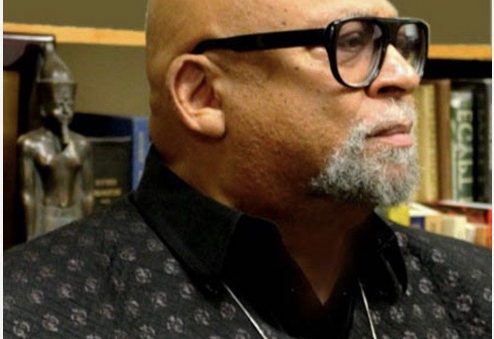By the 1920s, Oklahoma was home to some 50 African-American towns, in addition to a large and prosperous black community living in the city of Tulsa. These towns and their self-reliant middle class and affluent residents are documented by the home movies of Reverend S. S. Jones, an itinerant minister and businessman. Known and respected by the citizens of the towns whose lives he captured on film, Rev. Jones’s work offers revealing glimpses of these communities as a haven for African Americans who very often faced discrimination elsewhere in America. The subjects are everyday life: a family on the front porch of their bungalow, shop workers at a storefront, farmers plowing their fields, children playing on seesaws in a schoolyard. Much of the material documents the economic life of the towns, from business districts filled with prosperous merchants to the homes of successful professionals, with an abundant countryside beyond. As Rhea Combs, curator of film and photography for the Smithsonian’s National Museum of African American History and Culture, points out in her commentary, here we even find a married couple who were oil barons, proof of the extraordinary progress made in the relatively short time since the end of slavery. The fashions and hairstyles, automobiles and horses, and even such details as a man manually pumping gasoline at a filling station make the films a fascinating record of the lives of Americans, and African Americans in particular, in the early 20th century.
Breaking News
- Palm Springs Approves $27 Million Reparations Deal for Displaced Black and Latino Families
- Weber: ‘Every Vote Counts in California’s Elections’
- L.A. County Commission on HIV’s Black Caucus Hosts World AIDS Day at CDU
- Local Community Groups Plan Thanksgiving Giveaway Events
- Judge Dion Griffith Morrow Passes Away
- Election Controversy Sparks Debate in Pasadena NAACP Leadership Race
- James Lee and his Mobile Station Celebrate 50 Years Serving in the Community
- Mulenga Strengthens Bonds Between Los Angeles and Lusaka through Sister City Committee
- Maggie Hathaway Golf Course Renewal Project Breaks Ground
- Destination Crenshaw Celebrates Paul R. Williams with Stunning Mural by Patrick Henry Johnson
- Community Salutes Dr. George McKenna’s Stellar Achievements at Gala Retirement Celebration
- Davis Honored with Advocacy Award at State NAACP Conference
- OUCH! This One Really Hurts. Vice President Kamala Harris Loses Her Bid to be America’s First Female President
- Heather Hutt and Other Sentinel-endorsed Candidates Win Big in Local Races
- KCAL9/CBS2 Anchor Chauncy Glover Dies at 39
- Quincy Jones, Music Titan Who Worked With Everyone From Frank Sinatra to Michael Jackson, Dies At 91
- Compton-Woodley Airport Centennial Celebrates Black Contributions to Aviation
- A New Vision – Brandon Lamar’s Bid for NAACP Pasadena President
- NAACP California-Hawaii State Convention Highlights Black Voter Engagement, and More
- Vote Early, Vote Now! Empowering California’s Voters in 2024
- KAMALA HARRIS WILL BE AMERICA’S 47th PRESIDENT
- LAWA, L.A. County Bring Jobs to Taste of Soul
- Bakewell Media Sounds for the Soul Stage Totally Rocked Crenshaw Blvd.!
- State of Black Los Angeles Highlights Future of Communities of Color
- USC, Dorsey High, and Price School Band kick-off Taste of Soul
- Taste of Soul Fills Crenshaw Blvd. with Hundreds of Thousands of People
- Darnell Hunt Leads UCLA as Interim Chancellor
- Chrysalis Brings Job Opportunities to Taste of Soul Festival
- Bakewell Media ‘Sounds for the Soul’ Stage Presents Tony! Toni! Toné! Featuring Dwayne Wiggins at Taste of Soul
- It’s Here – the 19th Annual Taste of Soul Family Festival!
- Enjoy Church on the ‘Shaw at Brenda Marsh-Mitchell Gospel Stage
- Kamlager-Dove Secures $1.6 Million for Butterfly’s Haven
- Groundbreaking Reporter Warren Wilson Passes Away
- Brotherhood Crusade Gives Away Bikes to Community Youth
- Eric Benét Headlines KJLH Stage at Taste of Soul
- Jim McDonnell Named Next Chief of Los Angeles Police Department
- Newsom Signs Black Caucus Bills; Advocates Question ‘Reparations’ Description
- L.A. Urban League, NBC4, and Telemundo 52 Present State of Black Los Angeles
- Seventh Annual United Against Hate Week Launches from Watts
- Local Health Providers Offer Free Medical Services at Taste of Soul
- Attorney Fani Willis Addresses L.A. Community Members Supporting Her Race In Georgia
- Marqueece Harris-Dawson Elected as L.A. City Council President
- Q&A on Taste of Soul with Crystal Williams, Community Relations Manager at SoCalGas
- Costco is Coming to South Los Angeles
- Davóne Tines Unpacks the Legacy of Paul Robeson at Zipper Hall
- Black Caucus Members Weigh Next Steps for Reparations in California
- Celebrating Justice Ketanji Brown Jackson at The Ebell of LA
- Black Community Unites to Re-Elect L.A. Mayor Karen Bass
- L.A. Sentinel Visits Western States Carpenters South L.A. Training Center
- Street Named in Honor of Watts Activist `Sweet’ Alice Harris
- Tito Jackson, Member of Jackson 5, Dies at 70
- Councilwoman Heather Hutt Holds Campaign Kick-Off
- Food Bank of Southern California Antes Up Under New CEO
- Kamala Harris Trounces Donald Trump in First Presidential Debate
- Richard Alatorre, Pioneering Chicano Activist, Passes at 81
- Mayor Warren and the Impact of Local Officials
- Rams, Novavax Protects the Rams House With Vaccination Clinic
- JuJu Watkins Hit 1000 Career Points in Win Against Santa Clara
- Student Athlete of the Week: Anthony Torrence
- 2024 KITS Film Awards Empowers Foster Youth Through Storytelling and Filmmaking






